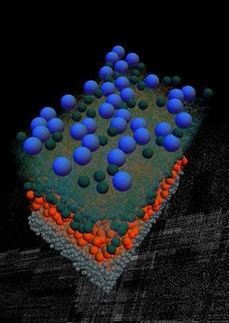When wine hits the right nerve
Neither the sense of taste nor the sense of smell is responsible for barrique appreciation
If wine leaves a bitter, cotton-like coating on the tongue, neither the sense of taste nor the sense of smell is responsible. The traditional oak barrel character, also called barrique character, is perceived via the trigeminal nerve, which is responsible for, among other things, pain and temperature perception. This is reported in the journal "Chemical Senses" by a research team headed by Prof Dr Dr Dr Hanns Hatt from the Faculty of Biology and Biotechnology at the Ruhr-Universität.
Patients with severed taste nerve do still taste barrique flavour
In collaboration with the RUB's ENT clinic at St. Elisabeth-Hospital, Dr Nicole Schöbel from the Department of Cell Physiology examined patients with severed taste nerves who were unable to taste the five flavours sweet, sour, bitter, salty and umami. They did, however, feel the barrique flavour, also called astringency, on their tongue. These results were confirmed by experiments conducted at the "Smell and Taste Center Florida" in Gainesville: subjects whose taste nerve was temporarily anaesthetised perceived the barrique flavour nevertheless. Once the trigeminal nerve was likewise switched off, however, the barrique flavour disappeared.
Gallic acids responsible for astringency
The cell physiologists from Bochum were the first ones to decode which exact structural features a material must possess to trigger the barrique flavour. The crucial element is a gallic acid group that consists of one carbon ring, namely a phenol ring, with three adjacent OH groups. The more gallic acid groups a substance contains, the stronger the astringency. "Gallic acids occur in smaller quantities in the seeds of grapes and in large complexes in oak barrels," explains Hanns Hatt. "In red wine, many of those molecules bond together and have an accordingly strong effect." The RUB team also discovered that larger complexes affect nerve cells more strongly, too, and result in a clearer barrique flavour by humans.
Without oak barrel and woodchips: barrique flavour made possible through chemical additives alone
Wine gets its barrique character not only through maturing in an oak barrel, but also through the addition of woodchips or wood flour. According to Hanns Hatt, this process has become even simpler: "Our research has made it possible to add the chemical substance that generates the barrique flavour directly to a wine. Such additives are approved for use in the EU and the USA."
Barrique substances activate cells in the trigeminal nerve
The RUB team used cell cultures to study the effect of barrique substances on cells from the trigeminal nerve of mice. In collaboration with the Chair of Food Chemistry at the TU of Munich, the researchers isolated substances triggering astringency from Bordeaux wine. The barrique substances excited the trigeminal cells; they activated a signalling pathway also known from olfactory cells, which runs via a G protein-coupled receptor. "We don't know yet which receptor exactly is responsible for the barrique flavour, but we are attempting to identify it," says Prof Hanns Hatt.
Original publication
Other news from the department science

Get the life science industry in your inbox
By submitting this form you agree that LUMITOS AG will send you the newsletter(s) selected above by email. Your data will not be passed on to third parties. Your data will be stored and processed in accordance with our data protection regulations. LUMITOS may contact you by email for the purpose of advertising or market and opinion surveys. You can revoke your consent at any time without giving reasons to LUMITOS AG, Ernst-Augustin-Str. 2, 12489 Berlin, Germany or by e-mail at revoke@lumitos.com with effect for the future. In addition, each email contains a link to unsubscribe from the corresponding newsletter.



















































